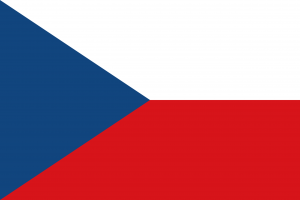Language/Czech/Grammar/Introduction-to-Adjectives
 Հայերէն
Հայերէն Български език
Български език 官话
官话 官話
官話 Hrvatski jezik
Hrvatski jezik Nederlands
Nederlands English
English Suomen kieli
Suomen kieli Français
Français Deutsch
Deutsch עברית
עברית हिन्दी
हिन्दी Magyar
Magyar Bahasa Indonesia
Bahasa Indonesia فارسی
فارسی Italiano
Italiano 日本語
日本語 Қазақ тілі
Қазақ тілі 한국어
한국어 Lietuvių kalba
Lietuvių kalba Νέα Ελληνικά
Νέα Ελληνικά Şimali Azərbaycanlılar
Şimali Azərbaycanlılar Język polski
Język polski Português
Português Limba Română
Limba Română Русский язык
Русский язык Српски
Српски Español
Español العربية القياسية
العربية القياسية Svenska
Svenska Wikang Tagalog
Wikang Tagalog தமிழ்
தமிழ் ภาษาไทย
ภาษาไทย Türkçe
Türkçe Українська мова
Українська мова Urdu
Urdu Tiếng Việt
Tiếng ViệtWelcome to the fourth lesson of the Complete 0 to A1 Czech Course! In this lesson, we will cover the basics of Czech adjectives. Adjectives are words that describe or modify nouns. They provide additional information about the noun’s properties, such as color, size, shape, or origin. By using adjectives, you can enrich your sentences and make them more expressive.
Adjective Agreement with Nouns
In Czech, adjectives agree with the noun they modify in gender, number, and case. This means that the adjective ending changes according to the gender, number, and case of the noun it describes. Here are the basic endings for adjectives:
| Gender | Singular | Plural |
|---|---|---|
| Masculine animate | -ý | -í |
| Masculine inanimate | -í | -é |
| Feminine | -á | -é |
| Neuter | -é | -á |
For example, let’s take the noun "kočka" (cat) and the adjective "černý" (black). Here are the different forms of the adjective:
- Černý kocour (masculine animate, singular)
- Černá kočka (feminine, singular)
- Černé auto (neuter, singular)
- Černí psi (masculine inanimate, plural)
- Černé kočky (feminine, plural)
- Černá auta (neuter, plural)
As you can see, the endings of the adjective change to match the gender and number of the noun they describe. Additionally, the adjective ending also depends on the case of the noun. We will cover the use of cases in more detail in later lessons.
Comparison Forms of Adjectives
In Czech, you can compare adjectives by using the comparative and superlative forms. The comparative form is used to compare two objects, people, or concepts. The superlative form is used to indicate the highest degree of a quality among a group of objects or people.
To form the comparative and superlative forms of adjectives, you add different suffixes to the base form of the adjective. Here are the basic rules:
- To form the comparative, add "-ší" (masculine and neuter) or "-šího" (feminine) to the base form of the adjective. For example: "velký" (big) → "větší" (bigger).
- To form the superlative, add "-í" (masculine and neuter) or "-ího" (feminine) to the base form of the adjective. For example: "krásný" (beautiful) → "nejkrásnější" (the most beautiful).
Note that some adjectives have irregular comparative and superlative forms. Here are some examples:
- Dobrý (good) → lepší (better) → nejlepší (the best)
- Špatný (bad) → horší (worse) → nejhorší (the worst)
- Mladý (young) → mladší (younger) → nejmladší (the youngest)
Learning the comparative and superlative forms of adjectives can help you express different degrees of qualities and make your language richer.
Practice
To practice using Czech adjectives, try to describe the people or objects in your immediate environment. Pay attention to the gender, number, and case agreement between the noun and the adjective. You can also create simple sentences with adjectives, such as "Mám velký dům." (I have a big house.) or "Moje sestra je krásná." (My sister is beautiful.)
Sources

